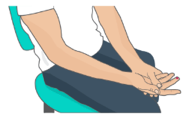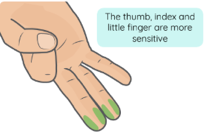We recommend the following tips.
To get your blood flowing:
- Stay hydrated, dehydration concentrates your haemoglobin giving a reading higher than it really is.
- Wash your hands in hot water before your test until they are nicely warmed.
- Get moving, swing your arm, clenching and unclenching your hands into a fist.
- Keep you hand below your elbow, so blood naturally flows downward.

To improve accuracy:
- Make sure you hands are dry after washing so water doesn't mix with your sample
- Do not squeeze your finger, this pushes out interstitial fluid from your skin into the blood, diluting the sample and giving you a falsely low reading

